Contents
Description
Peach is a great summer fruit. They have earned their popularity and love for their excellent taste, vitamin composition and the ability to perfectly quench their thirst.
Fruits often get their name from the country or place where they were first grown, such as dates from Phenicia. With peaches, the story is a little deceiving, they have nothing to do with Persia, but came to us from China. In European countries, the peach tree appeared only in the 1st century. AD
The Chinese endow peaches with simply magical properties and consider them a symbol of immortality. The fruit comes to Persia from the Far East and takes on the name Prunus Persica. If you look into the dictionary, it becomes clear that in translation into Russian it was simply called the Persian plum. As the conquests of Alexander the Great proceeded, the peach’s “journey” to the Mediterranean countries took place.
Having “conquered” Europe, the word peach began to sound more and more often. In terms of planting area, this fruit occupies an honorable third place, leaving only apples and pears ahead. In some countries, for example, Italy, he even won the palm in terms of productivity and the number of orchards. Today, there are over 3,000 different varieties of this magnificent fruit crop.
The closest relatives of the peach are bruignon and nectarine, in fact, they are also peaches, in the first case the fruit has an adherent bone, in the second it is easily detachable. Outwardly, they look more like a huge plum.
The peach tree is classified as deciduous. The largest varieties reach about 8 m in height. Among many other trees, it is easily recognizable by its blood-brown scaly bark and thick, rough branches. The tree has rather large leaves up to 18 cm, which have a rich dark green color and a serrated edge.
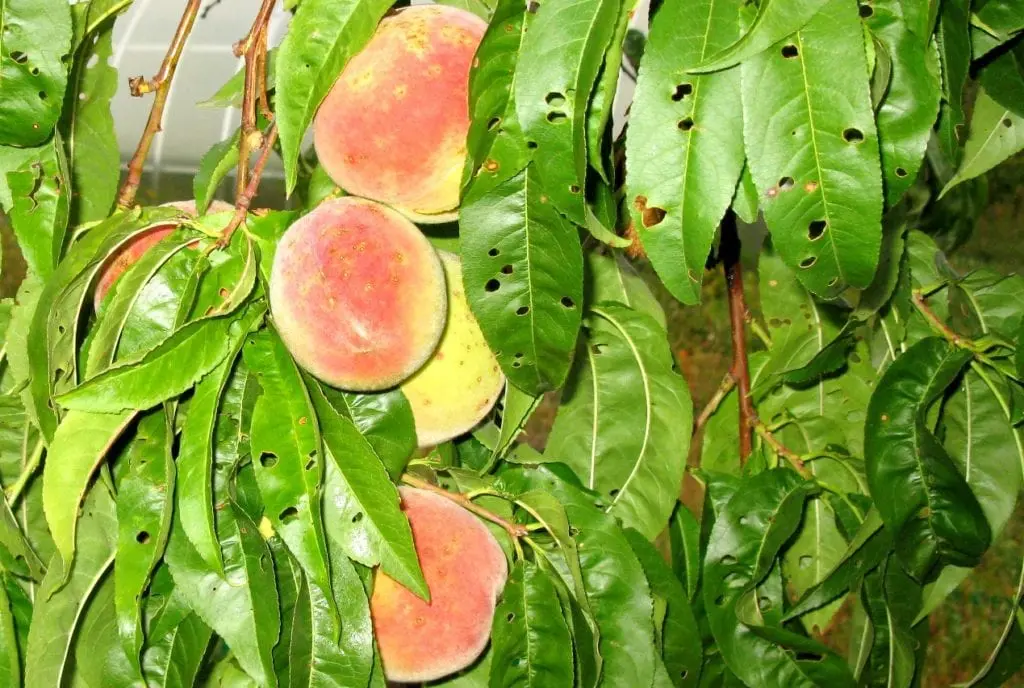
Fruits come in a variety of shapes and sizes. The only thing that unites them is a thin skin, densely covered with the smallest villi. The largest fruits reach 10 cm in diameter, the mass of one peach ranges from 50 to 400 grams. The color of the flesh depends on the species and ranges from green-white to rich orange with streaks of red.
Inside the fruit is one large bone with a slightly almond aroma and taste. The pulp of a ripe peach is juicy, sweet or slightly sour, very aromatic. The crop is harvested once a year from late May to mid-October.
Composition and calorie content
The vitamin-mineral complex of peach is rich and varied, the fruits contain: beta-carotene, vitamins of group B, C, E, K, H and PP, as well as potassium, magnesium, zinc, selenium, copper and manganese, iron, phosphorus and sodium, pectins.
calorie content 45 kcal
Proteins 0.9 g
Fat 0.1 g
Carbohydrates 9.5 g
Organic acids 0.7 g
Peach benefits
Peaches contain minerals such as calcium, iron, magnesium, phosphorus, potassium, sodium, zinc, manganese, fluoride and selenium.
Aromatherapy experts claim that peach scent can act as an antidepressant. These fruits help to improve brain activity, memory, increase concentration.
Peaches are useful for children and pregnant women, as well as for people with low hemoglobin.
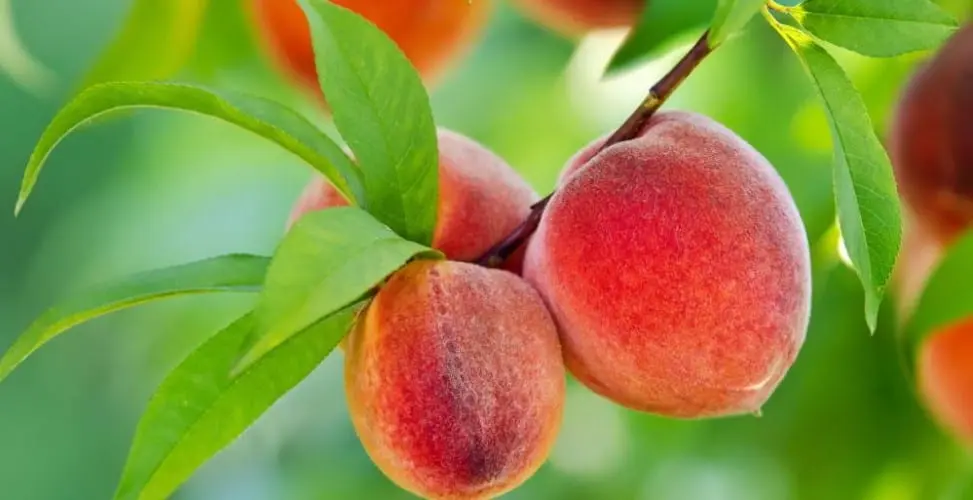
One of the main properties of a peach is its fortifying effect – peaches contain a large amount of vitamins A, C and B. Therefore, fruits are recommended to be consumed after a long illness. One peach provides 3/4 of the vitamin C a person needs.
The carotene in peach helps blood vessels and prevents cell degeneration. If you want to have beautiful velvety skin and maintain the effect for a long time, then regular consumption of peaches will help improve skin nutrition, retain moisture in cells, and prevent wrinkles.
Peach juice should be used for gastric diseases, in particular with low acidity of gastric juice. Peaches are diuretic and help to remove sand from the kidneys.
Fruits are recommended for heart disease due to potassium salts, which have a positive effect on the heart.
Peaches harm
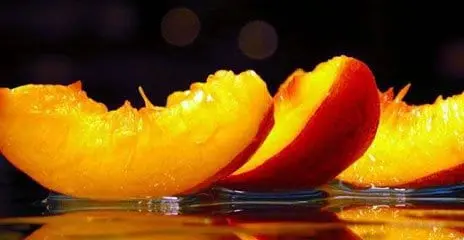
Peaches should not be used by people with the following diseases:
- Individual intolerance or allergy to peaches;
- Diabetes mellitus (the main thing here is not to abuse it);
- Obesity;
- Gastritis with high acidity, peptic ulcer;
- Upset stomach, diarrhea, any diseases of the gastrointestinal tract, in which it is necessary to limit the consumption of fresh fruit.
Anyone can get thick if they eat only peaches.
How to choose a peach
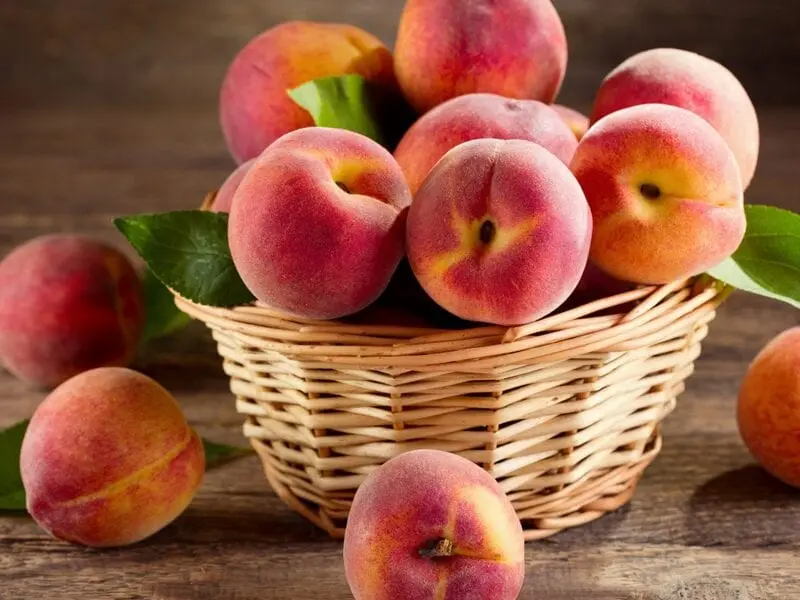
Choosing a ripe peach is not difficult at all – just smell the fruits that the seller is offering you. The stronger the aroma, the sweeter the peach.
The flesh of peaches can be yellow or white with pinkish veins. “White” peaches are sweeter, and “yellow” ones are more aromatic.
If bees and wasps are hovering around the peach stall, the seller is most likely not lying, claiming that he has “the ripe fruit on the market.”
If the seeds in purchased fruits are shriveled or broken, most likely the peaches were treated with chemicals. These substances are used in order to keep the fruits fresh during transport. Wash such fruits especially thoroughly, and better prepare compote or jam from them.
Application in cosmetology
Peaches soothe sensitive skin, relieve inflammation and redness. Mix the pulp of one ripe fruit with 1 tbsp. spoon of sour cream, add 1 tbsp. a spoonful of vegetable oil and apply the mixture on your face for 10 minutes.
If your hair is split, such a mask will help: peel 2 peaches, remove the bone and knead well until smooth. Add 2-3 tbsp. tablespoons of milk and apply the mask evenly on the hair for 20-30 minutes. Then wash off the mask.
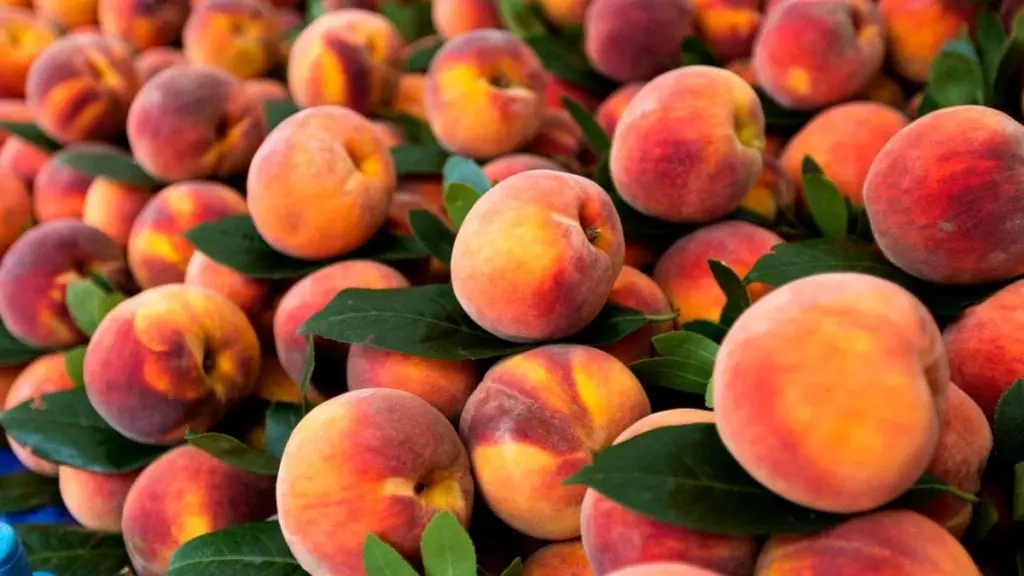
Moisturizing mixture for facial skin care: dilute a quarter cup of freshly squeezed peach juice with milk in equal proportions. Soak a gauze cloth in the resulting solution and apply it to the skin, as the cloth dries, wet it again. Hold for about twenty minutes.
A peach and honey mask will help to improve the complexion and smooth out fine wrinkles. Peel and crush well. To 1 st. spoon of pulp, add 1 teaspoon of warmed honey, stir and apply the mass on the face for 10-15 minutes, then rinse with water at room temperature.
This mask recipe is recommended for oily skin: mix 2 teaspoons of mashed peach pulp with 1 beaten egg white. Apply the mixture for 15-20 minutes, then rinse with cool water.
The effect of peach leaves on the human body
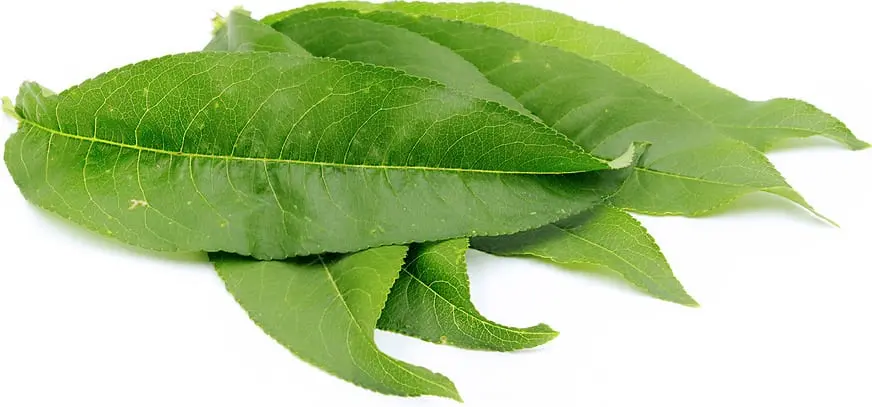
Water extracts of peach leaves have been used in folk medicine since ancient times. In modern history, scientists have conducted clinical trials and scientific studies that have proven that peach leaves have:
- Antioxidant action
- Immunomodulatory action
- Capillary strengthening action
- Antineoplastic action
- Diuretic action
Peach leaf contains the maximum amount of polyphenolic compounds, which are powerful antioxidants:
- eliminate free radicals from the body;
- increase immunity;
- slow down the aging process;
- fight viruses and bacteria;
We figured out how many calories there are in a peach, how it is useful and how delicious it is to cook such a familiar fruit. It remains to wish you bon appetit.









